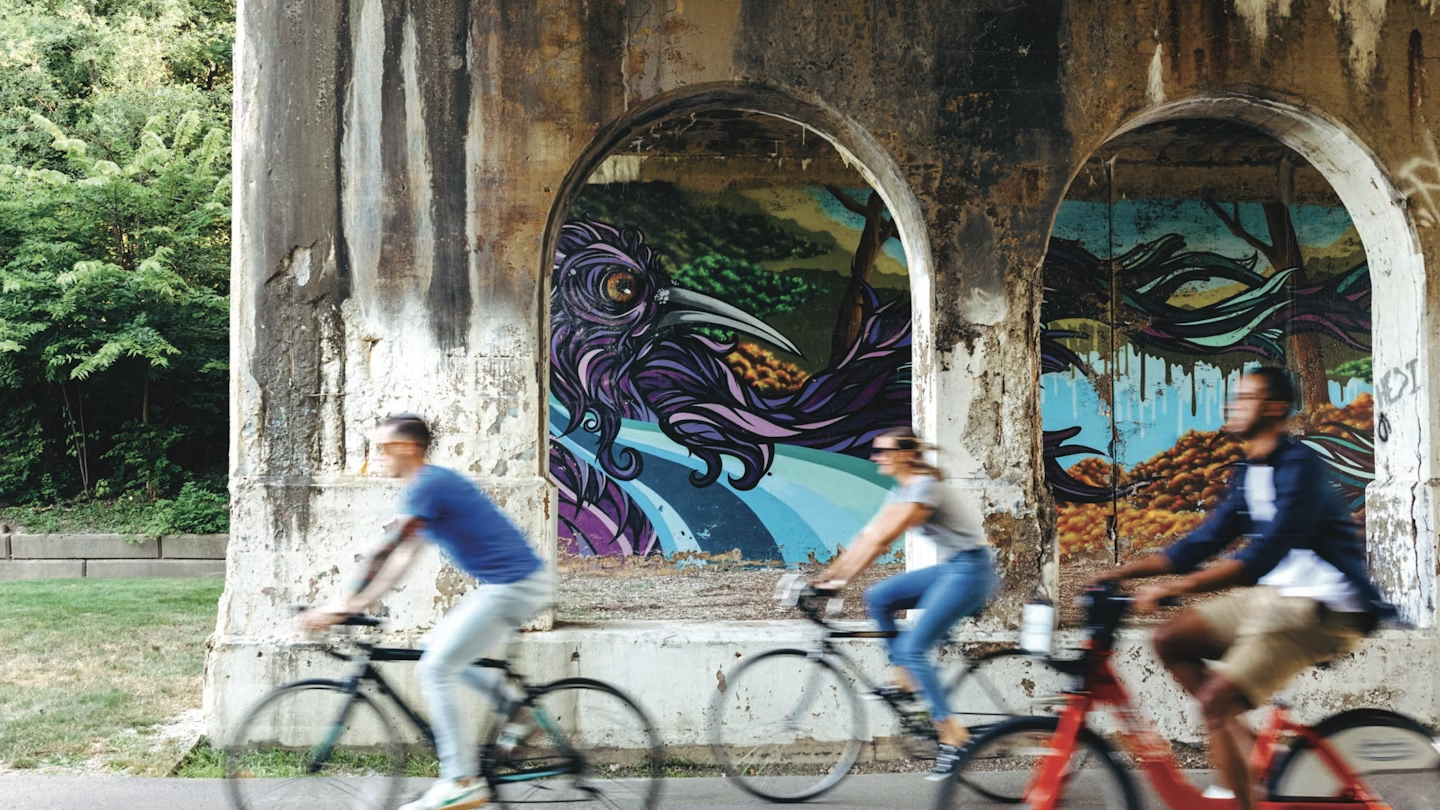As the Motor City experiences an economic and cultural resurgence, visitors can still explore Detroit’s dynamic history and arts scene without emptying their wallets.
| Activity | Description |
|---|---|
| Detroit Public Library Tour | Explore architectural beauty and attend free events. |
| Heidelberg Project | An open-air art environment with evolving installations. |
| Explore Southwest Detroit | Experience diverse cultures and cuisines. |
| Guardian Building | Admire Art Deco architecture and interior designs. |
| Historic Sites in Greektown Tour | Discover Greek heritage and architecture. |
| BEHEMOTH at the DIA | See the iconic sculpture; free for county residents. |
| Nichols Arboretum Grounds | Enjoy nature’s beauty in this expansive green space. |
| Sunset over the Ambassador Bridge | Capture stunning views of the bridge and skyline. |
| Outdoor Murals Exploration | Discover vibrant street art throughout the city. |
| Cultural Festivals | Participate in free events celebrating diverse cultures. |
| Campus Tours | Visit local universities and admire their architecture and art installations. |
Beyond the recently reinvigorated downtown, the city’s diverse neighborhoods offer plenty of sights and activities perfect for travelers on a budget. Take advantage of these top free things to do in Detroit on your next frugal getaway.
Tour the Detroit Public Library
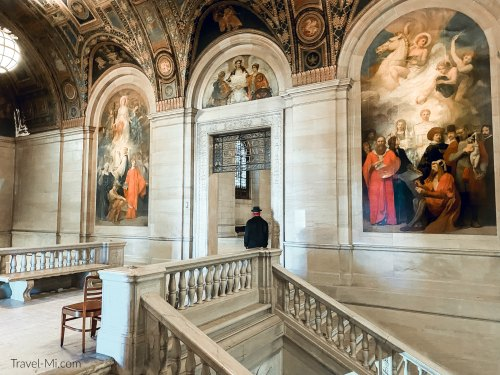
Name and Location: The Detroit Public Library is located at 5201 Woodward Ave, Detroit, MI 48202 in Midtown.
History and Significance: Founded in 1865, Detroit Public Library’s Main Branch has occupied its current home, designed by famed architect Cass Gilbert, since 1921. The building contains beautiful original architecture and artworks.
What to Expect: Visitors can explore the intricate interior and take free 1-hour public tours covering highlights like the granite foyer, murals, marble carvings and the ornate Burton Historical Collection room.
Visitor Information: Free guided tours run twice-monthly. Self-guided visits also welcomed during open hours. Main Branch hours: Monday–Thursday 9 AM–7 PM and Friday-Saturday 9 AM–5 PM.
With its nearly $3 million facelift in 2019, the Detroit Public Library’s Main Branch emerged as one of the city’s architectural gems. The original 1921 cass gilbert structure pairs gorgeous Italian Renaissance detailing with two sleek modernist additions completed in 1963 and 1997. Visitors are welcome to explore the building’s soaring Grand Hall and cozy Burton Historical Collection room for free. Or attend one of the frequent art exhibits, author talks or community meetings held on-site year-round, typically free and open to the public.
See the Heidelberg Project
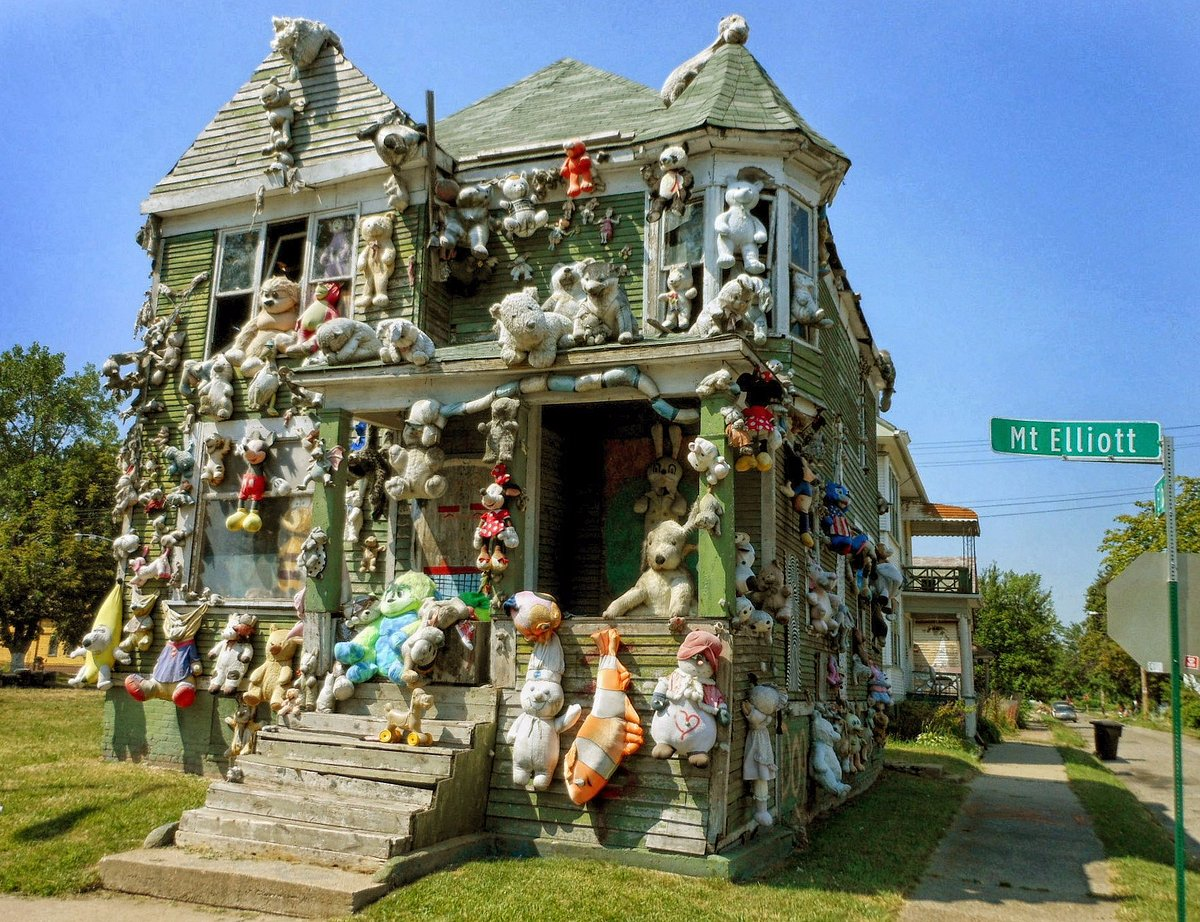
Name and Location: The Heidelberg Project is an open-air art installation spanning abandoned properties at 3600 block Heidelberg St. in Detroit.
History and Significance: Artist Tyree Guyton began the two-block found-object art environment in 1986 to revitalize his struggling neighborhood using reclaimed materials. It evolved into a world-renowned cultural destination.
What to Expect: Visitors view outdoor multi-media art displays made of salvaged items like doors, clocks, toys and textiles transformed into colorful symbols of hope along Heidelberg Street.
Visitor Information: The Heidelberg Project is free to view and open 24/7 year-round as an outdoor public art space. Guided tours available via booking.
This “open-air art environment” stretches along Heidelberg Street and its environs on the city’s east side. Local artist Tyree Guyton began installing found object sculptures and brightly painted houses covered in dancing dots throughout his deteriorating block in 1986. Now expanded over two blocks and multiple city lots, visitors can take self-guided tours to see an ever-evolving gallery highlighting issues around race, class, culture and the environment. Abstract patterns, hidden meanings and some tongue-in-cheek touches reward those who look closely across this interactive community art piece.
Explore Southwest Detroit
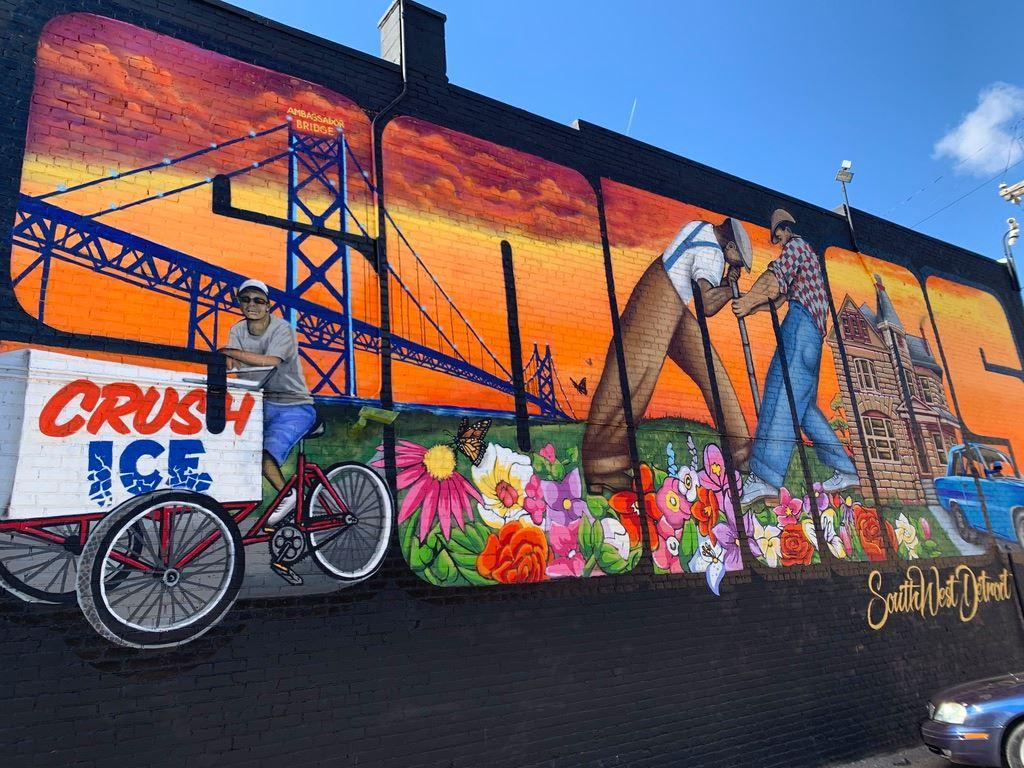
Name and Location: Southwest Detroit refers to neighborhoods below Michigan Ave. like Springwells Village, Vernor Junction and Mexicantown.
History and Significance: Settled first by German, then Mexican immigrants, today Southwest Detroit remains the heart of Latino culture in Michigan, renowned for murals, shops and eateries.
What to Expect: Visitors stroll vibrant commercial corridors like Vernor Hwy. and Bagley St., view street art, and sample Mexican bakeries, restaurants, bars and stores carrying handicrafts and more.
Visitor Information: Southwest Detroit’s business districts are largely open daily. Check individual sites for hours. Guided tours available via companies like Detroit Experience Factory.
Venture beyond downtown to experience the sights, sounds and tastes from some of the city’s most vibrant immigrant communities. Mexicantown’s iconic “Welcome to Mexicantown” gate anchors a commercial district filled with taquerias, panaderias, carnicerias and more authentic establishments. Around the corner, patrons sip thick Middle Eastern coffee inside Al-Haramain International Foods before browsing the spice stalls at Honey Bee Market nearby. And don’t miss the music wafting through Clark Park or gorgeous tilework capping Our Lady of Guadalupe Church, oldest site of Catholic worship in Detroit.
See the Guardian Building
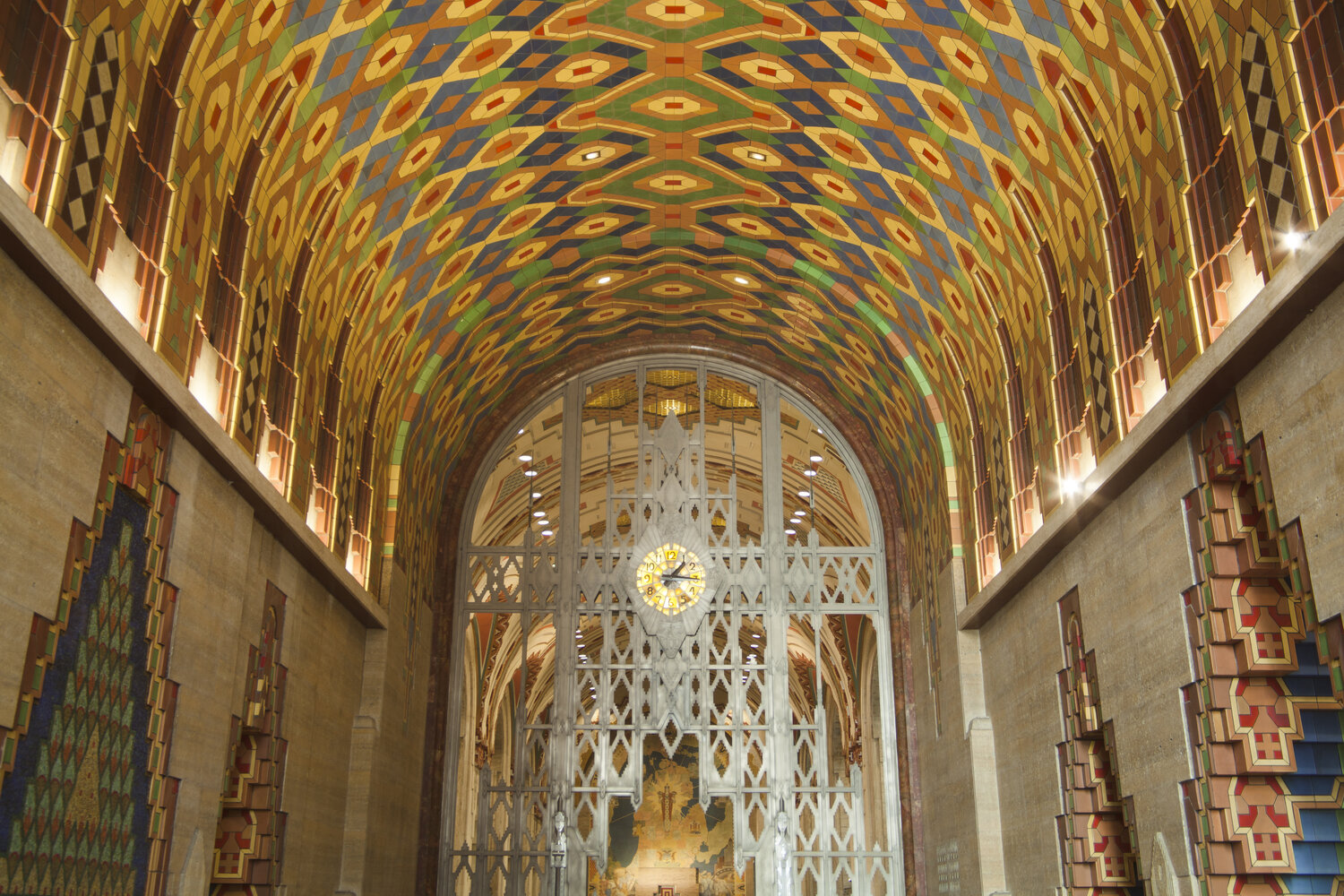
Name and Location: The Guardian Building stands at 500 Griswold St. in Detroit’s Financial District.
History and Significance: The 40-story Art Deco skyscraper finished in 1929 boasts a vibrant exterior and grand four-story lobby, exemplifying 1920s urban grandeur. Its cathedral-like arcade earned it the “Cathedral of Finance” moniker.
What to Expect: Visitors crane their necks admiring the Turquoise Guardian roofline then step inside to discover an intricate beamed ceiling, Native American motifs, marble and displays highlighting this National Historic Landmark.
Visitor Information: The Guardian Building lobby accessed weekdays offers the free self-guided experience. Extended evening/weekend hours possible at certain downtown events.
This Art Deco treasure dazzles visitors with a lobby sheathed in gleaming tiles lavished with silver and gold geometric designs. Nicknamed the Cathedral of Finance, the 500,000-square foot office building fills with natural light thanks to its vaulted five-story atrium and signature clock visible from the exterior. Although privately owned, visitors can access shops and dining establishments within the Guardian Building during regular business hours. Time your visit around lunch to experience the Building’s majesty without interrupting office tenants.
Tour Historic Sites in Greektown
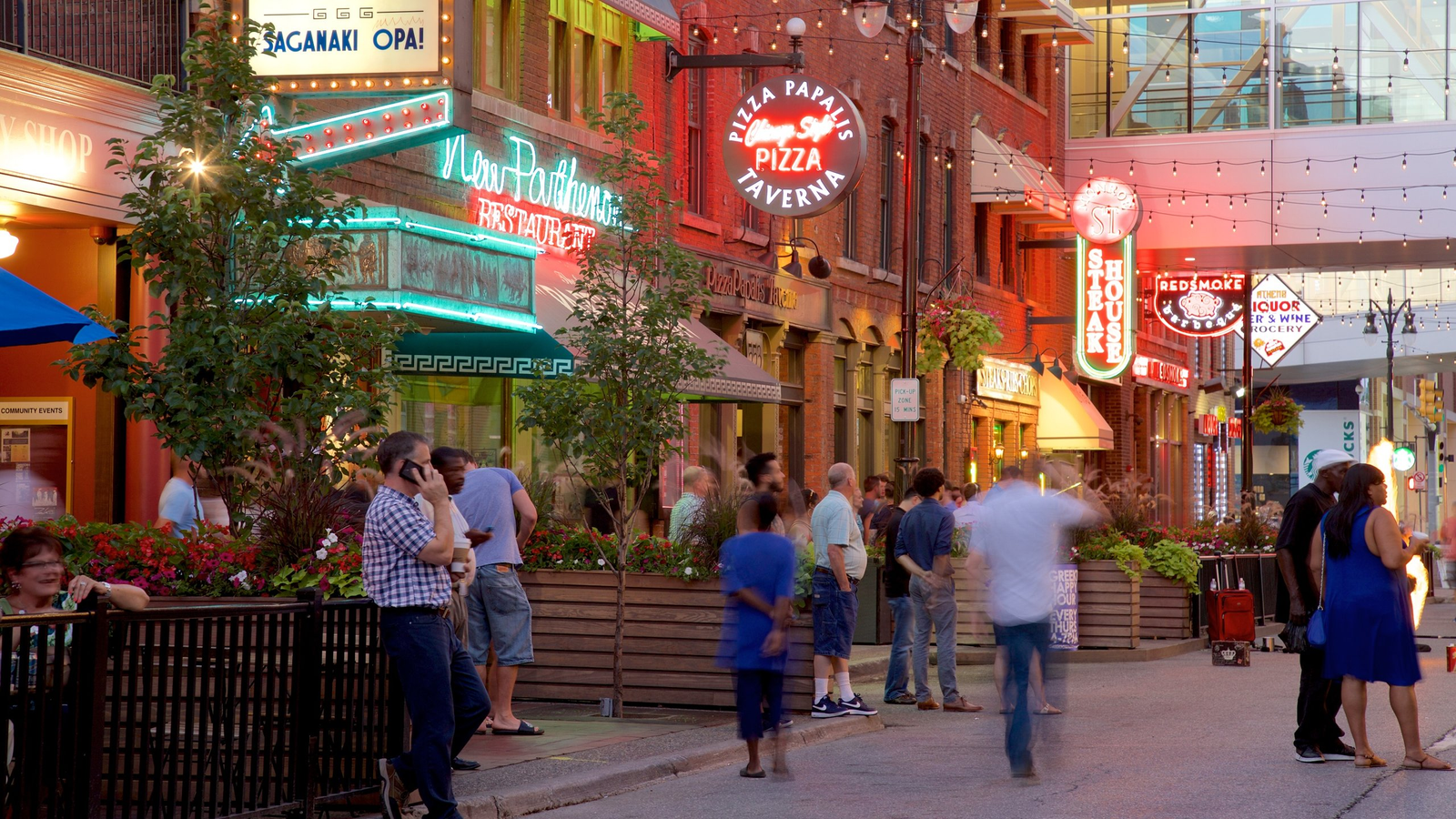
Name and Location: Detroit’s Greektown lies just northeast of downtown, centered on Monroe Street between Brush and St. Antoine Streets.
History and Significance: Detroit’s Greektown emerged as hub for Greek immigration in the early 1900s. Historic commercial buildings house restaurants and businesses that retain Mediterranean heritage while also blending diverse cultures.
What to Expect: Foodies indulge in saganaki, gyros, paella and more before exploring sites like St. Mary Roman Catholic Church, the nation’s oldest Greek Orthodox Church, or the landmark Greektown Casino Hotel.
Visitor Information: Historic Greektown sites are largely open daily to visitors. Guided walking tours like those offered by Preservation Detroit provide deeper insights.
Detroit’s colorful early immigrant history plays out in restored buildings clustered along Monroe Avenue in downtown’s Greektown entertainment district. See Michigan’s oldest surviving antebellum structure at the Hellenic Museum housed inside the 1845 Nahas Grocery Building. Or gaze up at the ornamented yellow brick facade fronting the 1915 Sts. Constantine and Helen Greek Orthodox Cathedral before stepping inside to glimpse the intricately decorated interior. Free parking allows visitors to easily hop between these sites plus the 1910 AHEPA Apartments and nearby restaurants serving spanakopita, flaming saganaki cheese, gyros and baklava.
Watch the articulated BEHEMOTH at the DIA
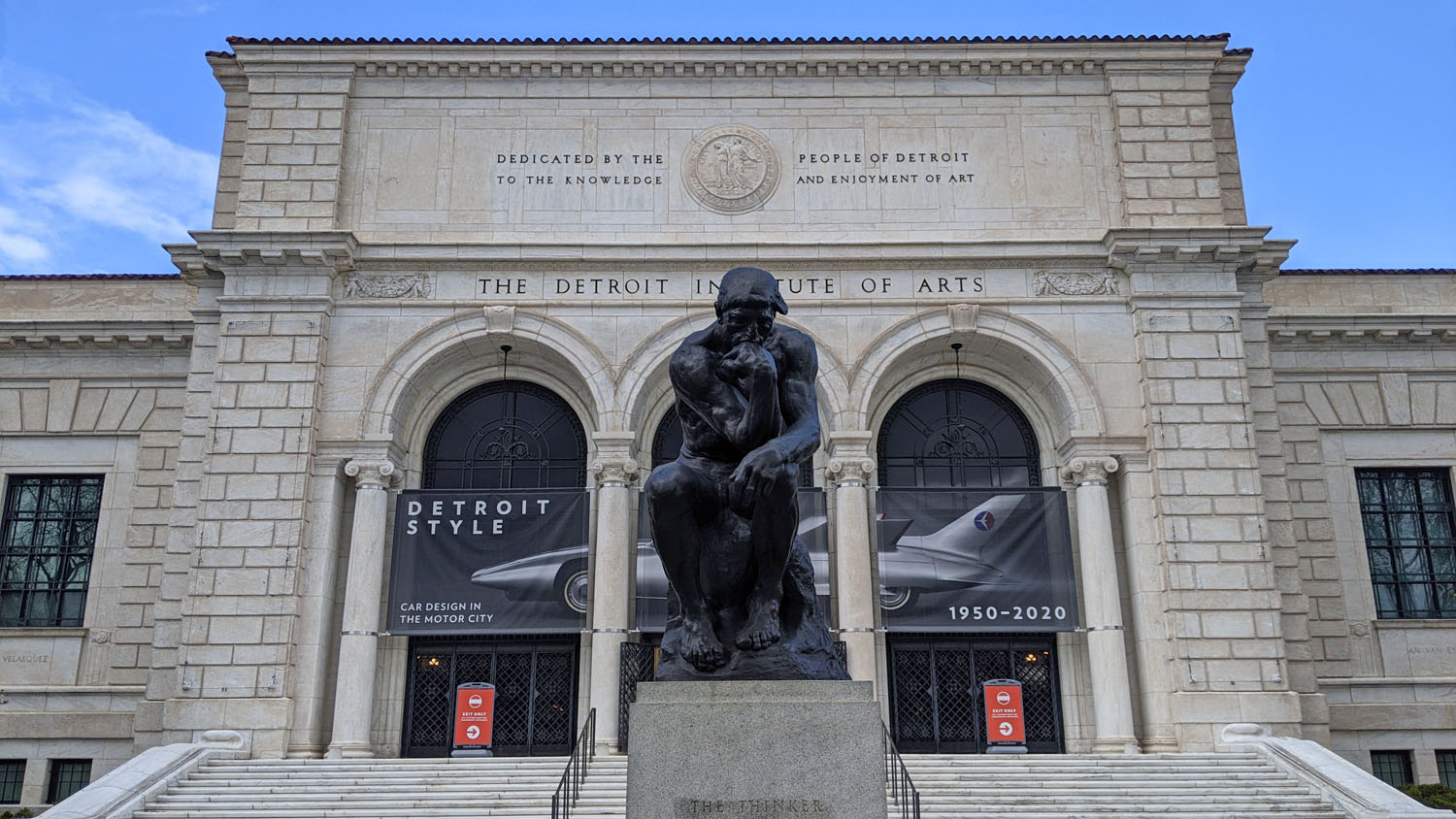
Name and Location: The Detroit Institute of Arts is located at 5200 Woodward Ave, Detroit, MI 48202 in Midtown.
History and Significance: Founded in 1885, the DIA houses one of America’s most significant art collections. In the central Woodward Ave. entrance, kinetic sculptor Arthur Ganson’s whimsical metal machine “BEHEMOTH” enthralls guests.
What to Expect: Museum visitors gaze up at the oversized contraption made of metal, wood and rope as it endlessly cycles through chaotic-yet-graceful motions evoking the complexity of existence.
Visitor Information: Viewing BEHEMOTH is included with museum admission (free to residents). Public hours: Wed-Sun 9 AM–4 PM. Closed Mondays and Tuesdays.
Among the nearly 70,000 treasures inside the Detroit Institute of Arts galleries, this playful sculpture captures smiles from kids and adults alike. Designed by Mark di Suvero in 1999, the bright red BEHEMOTH stands 45 feet tall in the DIA’s Woodward-facing Albert and Peggy de Salle Gallery of Modern Art. Made from industrial I-beams masterfully joined together off-balance, seeing this monumental mobile creature in motion is worth admission alone. But general entry to view the sculpture and the rest of the museum has been free to residents across Wayne, Oakland and Macomb counties since 2012 thanks to a local tax subsidy. Out-of-towners will need to pay admission fees.
See the Grounds at Nichols Arboretum
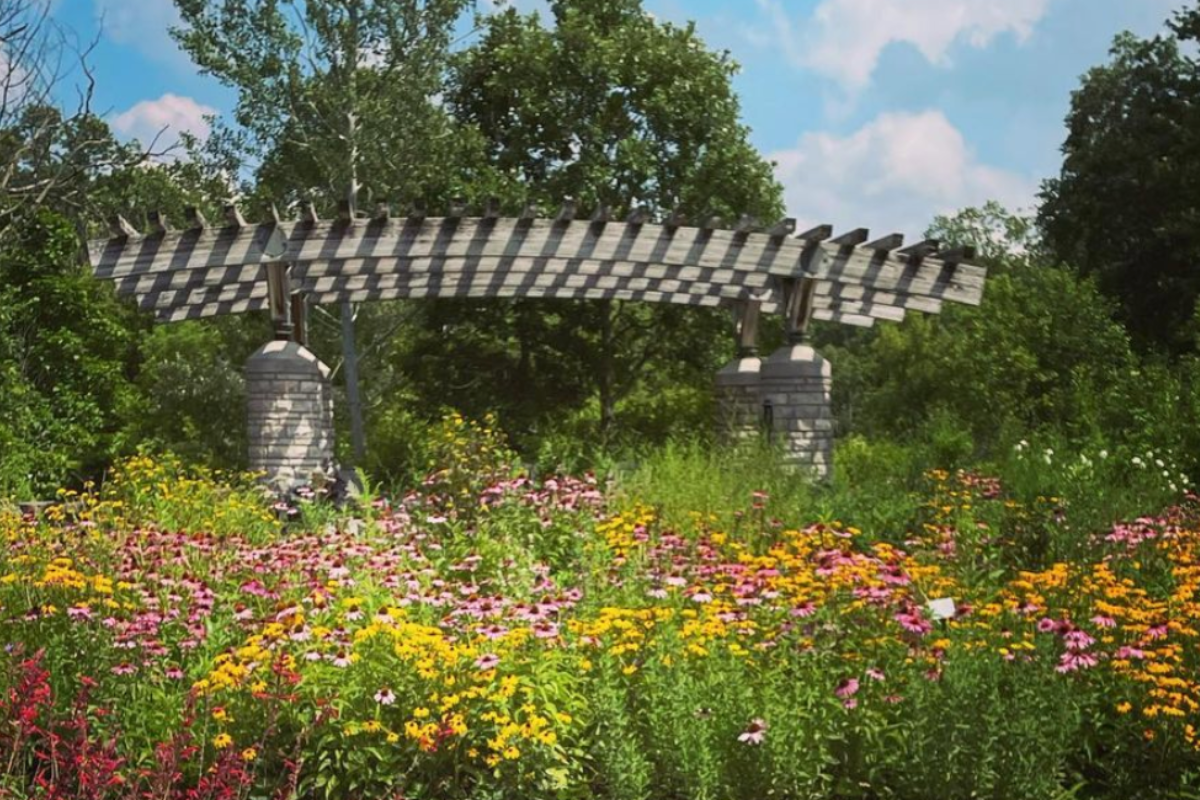
Name and Location: Nichols Arboretum encompasses 123 acres on the University of Michigan at 1610 Washington Heights, Ann Arbor, MI.
History and Significance: Originally farmfields, the land became a university botanical garden in 1906 renowned for Asian collections around the Peony Garden historic home. Its romantic landscape inspires rejuvenation.
What to Expect: Visitors stroll curving pathways to discover native woodlands, streams, lawns, floral collections and ruins evoking old-world architecture nestled across rolling topography.
Visitor Information: The arboretum grounds are open daily 7 AM–dusk. Peony Garden House offers tours June–August. Also visitor center and gift shop on site.
Discover why the University of Michigan ranks among the original “Public Ivies” with a leisurely stroll through its regional outpost arboretum. Located down the road from Ann Arbor in neighboring Nichols, the Matthaei Botanical Gardens and Nichols Arboretum together showcase over 700 acres of formal gardens, expansive lawns, woodland trails, and riverfront access open 365 days a year. Seasonal highlights include winter sledding, spring wildflowers, an autumn corn maze and brilliant fall colors across collection trees and shrubs from around the globe. Free access and parking makes this a great budget-friendly option for green-space-loving travelers.
Watch the Sunset over the Ambassador Bridge
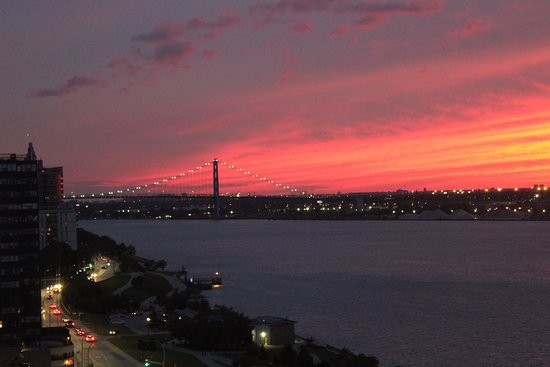
Name and Location: The Ambassador Bridge linking Detroit and Windsor stands just west of downtown Detroit over the Detroit River.
History and Significance: Built in 1929, the Ambassador Bridge was once the world’s longest suspension bridge. Silhouetted against colorful sunsets viewed from Riverfront parks, its towers have become an iconic city skyline marker.
What to Expect: Locals and visitors gather along riverfront promenades with perfect views west through the neon-lit bridge overhead as the sun sinks behind it into the Detroit River’s horizon.
Visitor Information: Parks near Hart Plaza provide ideal public sunset viewing spots. Maximize skyline perspectives from Windsor’s riverfront. Golden hour lasts roughly 7:30 PM in summer.
Find a prime spot along Detroit’s riverfront for unobstructed views across to Windsor, Ontario skyline with the iconic suspension bridge in the foreground. Viewing locations dot the path tracing the Detroit River for 3.5 miles from Hart Plaza to Gabriel Richard Park. Grab a perch on the tiered steps leading down to the walkway outside GM Renaissance Center as the sky fades to pink. Or head farther east downriver near William G. Milliken State Park to watch massive freight liners traverse alongside small pleasure boats headed out for an evening cruise during the long summer twilight.
Explore Outdoor Murals
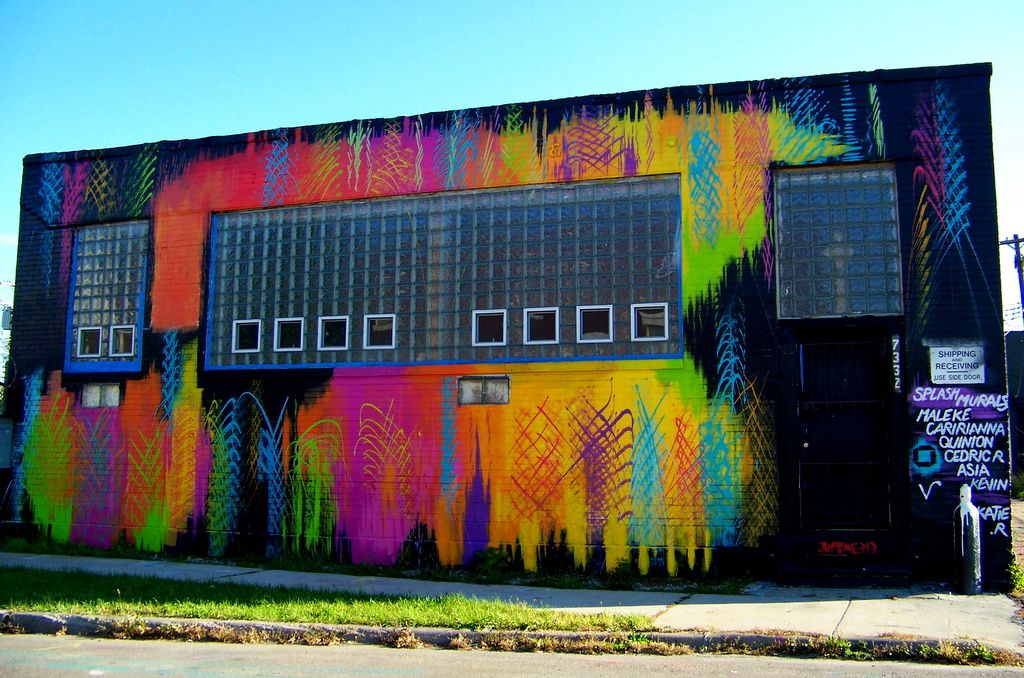
Name and Location: Vibrant murals and street art abounds across Detroit, particularly downtown and in neighborhoods like Eastern Market.
History and Significance: From Diego Rivera’s iconic murals to contemporary artists, Detroit’s creative spirit shines through in sanctioned public art installations and rebellious graffiti beautifying walls citywide. New works appear regularly.
What to Expect: Among endless examples, must-sees include the alleyway Belt art, the Boblo boats mural commemorating the old ferries, and the towers of Eastern Market. Snap some creative photos.
Visitor Information: Detroit’s exterior art galleries are free, publicly accessible year-round. Guided mural tours like those from Detroit Experience Factory dish all the details.
Detroit’s building facades burst with artistic expression thanks to an explosion of public mural projects in recent years. Downtown’s alleyways erupt in color thanks to annual events inviting street artists to activate often overlooked urban spaces. All are welcome to gaze up at these temporary works of art for free before they get painted over each season. Heading into Eastern Market, the nine-story tall belt at 1600 Winder features intricate 3D lettering announcing the district’s name beside Romain Blanquart’s stacked truck mural at Gratiot Central Market. And don’t miss the poignant dignity and direct gaze of Brenda “Safiya” Miller’s massive portrait visible driving west near New Center.
Celebrate Cultural Festivals

Name and Location: Festivals span various Detroit parks and venues, largely downtown along the Riverwalk and in neighborhoods like Mexicantown.
History and Significance: Cultural festivals give visitors a fun glimpse into Detroit’s diversity. Long-running ethnic celebrations fuse old traditions with contemporary music, food vendors, parades and local crafts.
What to Expect: Crowd-pleasers include the St. Patrick’s Parade through Corktown, Cinco de Mayo in Mexicantown, African World Festival at Hart Plaza, and music blowouts like Movement electronic fest.
Visitor Information: Detroit festivals occur spring through fall. Most run Friday-Sunday with free admission, except ticketed concerts. Event schedule and details on websites like Visit Detroit’s.
A full calendar of events unfolds across metro Detroit’s parks and public spaces between spring and fall each year. Locals and visitors come together to celebrate cultural heritage, uniqueness and a shared sense of community during beloved annual traditions. Highlights include the nation’s largest Cinco de Mayo celebration at Patton Park, food and fashion taking over Greektown during the Detroit Greek Independence Day Parade, stunning dancers competing during Detroit’s Caribbean Carnival, and 800,000 lanterns lighting up the sky over the Detroit River during the region’s AsiaTown Street Fair.
Take a Campus Tour

Name and Location: The University of Michigan provides tours from its Visitor Center at 3010 Student Activities Building, 515 E. Jefferson St. in Ann Arbor.
History and Significance: Founded in 1817 before Michigan statehood, U-M’s historic campus contains one of America’s great public university settings across central and north campuses. Exploring the Diag and Law Quad transports visitors back in time.
What to Expect: Free 90-minute walking tours by student leaders hit highlights like Burton Memorial Tower, the Michigan Union, Angell Hall Observatory and the renowned Michigan Stadium “Big House.”
Visitor Information: Public tours offered weekdays year-round when school is in session. Reservations required 24 hours in advance either online or by phone through Visitor Center.
Home to 27 colleges and universities, metro Detroit offers many voucher opportunities for continuing education. Visitors can access amazing architecture, public art installations, historic buildings and lush green spaces by touring some of these campuses easily accessible throughout the metropolitan area. Architecture buffs won’t want to miss masterpieces like Eliel Saarinen and Albert Kahn’s Art Deco buildings at Wayne State in Midtown or University of Michigan’s Law Quad featuring the striking Burton Memorial Tower. Families can explore through self-guided walks or join free tours offered during school breaks at campuses like the Grosse Pointes’ University Liggett School or University of Michigan Dearborn.

